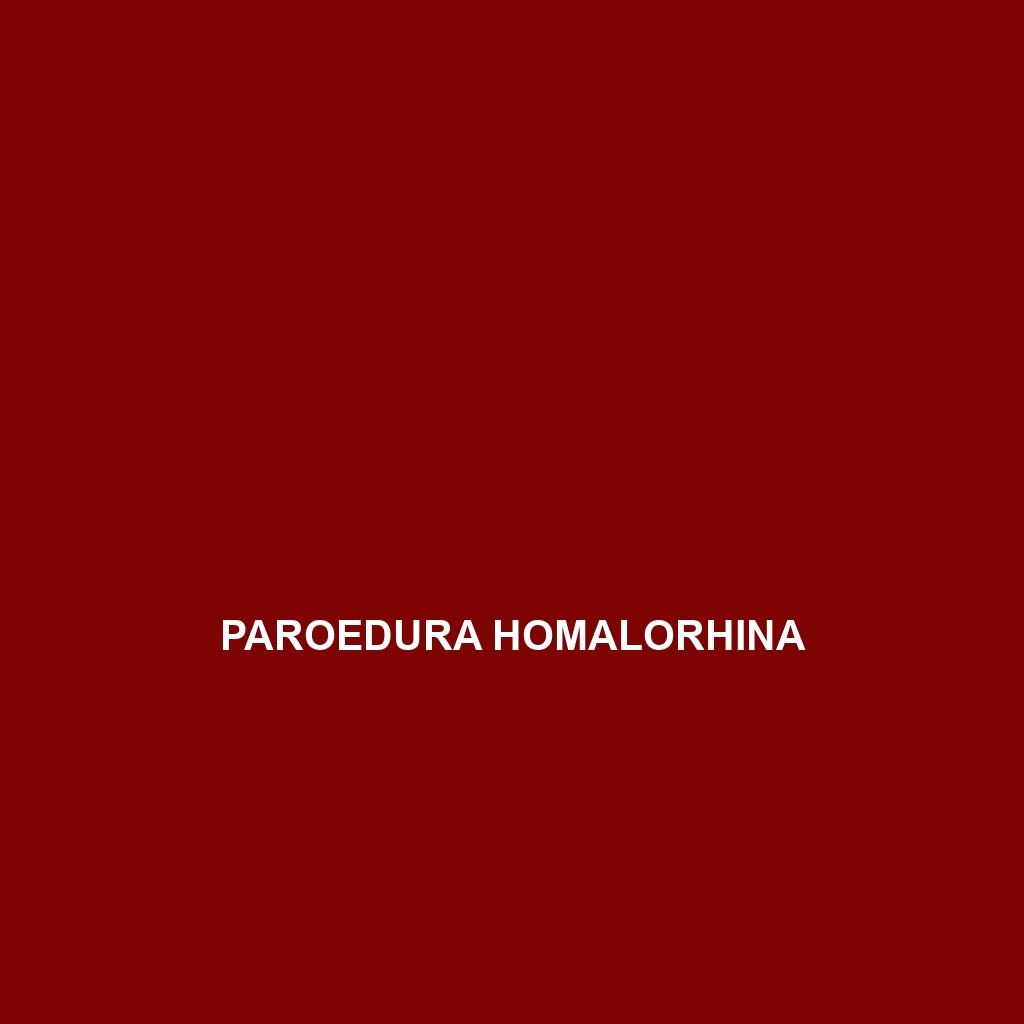Common Name
Paroedura homalorhina
Scientific Name
Paroedura homalorhina
Habitat
Paroedura homalorhina, commonly known as the Madagascan fat-tailed gecko, is primarily found in the diverse habitats of Madagascar. This species thrives in various ecosystems, including the lush rainforests of the eastern region and the more arid s savannahs in the south of the island. The geographic location plays a significant role in its adaptation, where temperatures fluctuate seasonally and humidity levels vary, creating a unique environmental condition suitable for this gecko. This species tends to inhabit crevices in rocky outcrops, among leaf litter, or under logs and stones, which provide both shelter and hunting grounds that are rich in potential prey.
Physical Characteristics
Paroedura homalorhina is a medium-sized gecko, typically reaching lengths of 15 to 20 centimeters. One of its most distinctive physical features is its stout body, which is adapted for a slow-moving lifestyle. The gecko exhibits a variety of colors ranging from brown to beige, often with intricate patterns that help it blend seamlessly into its environment. This cryptic coloration serves as effective camouflage against predators in both rainforest and savanna settings. Additionally, the species possesses a flat head which contributes to its unique appearance, allowing it to hide effectively in tight spaces.
Behavior
As a primarily nocturnal species, Paroedura homalorhina exhibits active foraging behaviors during the night. During the day, these geckos tend to remain hidden to avoid predation. They have a solitary nature, coming together primarily during mating seasons. One noteworthy behavior is their body language, particularly during courtship, where males may perform push-up displays to assert their dominance or attract females. This species also demonstrates unique habits such as tail autotomy—the ability to shed its tail when threatened—which may help it escape predators while distracting them with the moving limb.
Diet
The dietary habits of Paroedura homalorhina categorize it as an insectivore, primarily feeding on a variety of insects, arachnids, and other small invertebrates. Its diet may include crickets, moths, and various beetles. The gecko uses its keen eyesight, particularly in low-light conditions, to hunt for prey effectively. Feeding occurs mainly at night, where it employs a sit-and-wait strategy, allowing prey to come close before striking with precision.
Reproduction
Reproductive activity in Paroedura homalorhina typically occurs during the wetter months when food availability is high. The mating season begins in late rainy season, with males engaging in elaborate courtship displays to attract females. After a successful pairing, the female lays around two eggs, which are usually deposited in hidden locations among leaf litter or crevices to protect against predation. The incubation period lasts approximately 30 to 45 days, and once hats, hatchlings are independent from birth, capable of foraging on their own immediately.
Conservation Status
Currently, Paroedura homalorhina is listed as Least Concern by the International Union for Conservation of Nature (IUCN), but its population is subject to fluctuations due to habitat loss from deforestation and agricultural expansion in Madagascar. Conservation efforts are crucial to preserve the region’s biodiversity. Protection of critical habitats and implementation of sustainable land-use practices are essential for safeguarding this species, as well as the countless other species residing in Madagascar’s unique ecosystems.
Interesting Facts
One interesting fact about Paroedura homalorhina is its remarkable ability to regenerate its tail after losing it. This adaptation not only aids in escaping from predators but also plays a role in energy conservation, as the regenerated tail can store fat reserves. Additionally, this gecko has a unique method of communication through vocalizations, such as hissing sounds, when threatened, which adds to its intriguing behavioral repertoire.
Role in Ecosystem
Paroedura homalorhina plays a significant role in its ecosystem as both a predator and prey. By feeding on various insects, it helps regulate the populations of these species, contributing to the balance of the ecosystem. Moreover, this gecko serves as a food source for larger predators, ensuring its place in the food web. Its presence aids in seed dispersion for various plants, fulfilling an essential ecological function that supports plant diversity within its habitat.
